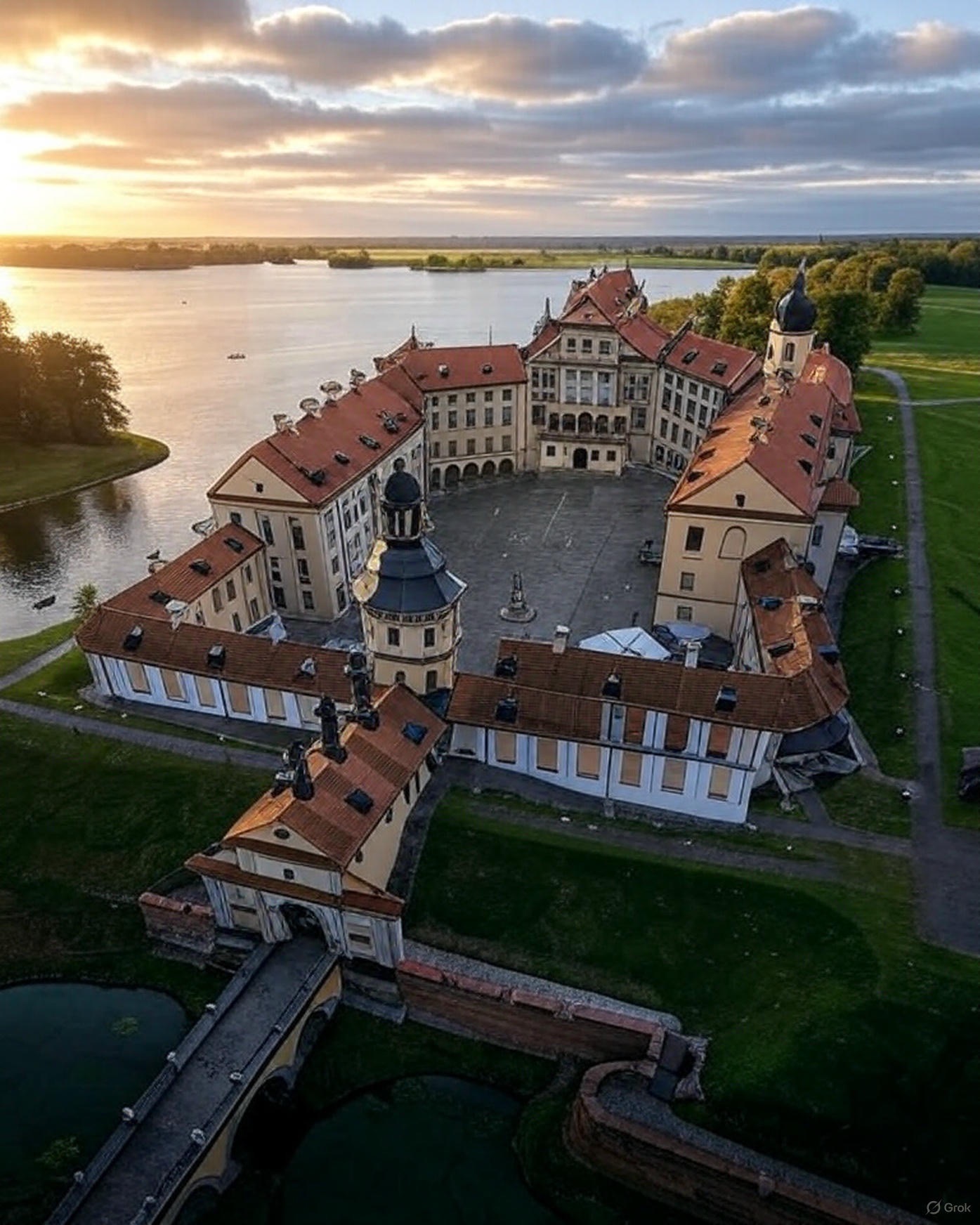Amidst the lush landscapes and tranquil rivers of Belarus rises the majestic Nesvizh Castle, one of Eastern Europe’s most iconic architectural and historical landmarks. Surrounded by natural beauty and a calm moat, this castle is more than just a picturesque site — it is a living chronicle of power, culture, and legacy.
A Legacy of Nobility
Constructed in the 16th century, Nesvizh Castle served as the principal residence of the noble Radziwiłł family, one of the most powerful aristocratic dynasties in the Polish–Lithuanian Commonwealth. It functioned not only as a private palace but also as a political and cultural hub in the region.
The architecture is a harmonious blend of Gothic, Renaissance, Baroque, and Classical styles — a reflection of centuries of European influence and the evolving tastes of its royal inhabitants. The interior includes lavish halls, a family crypt beneath the chapel, grand staircases, and a spacious courtyard designed for ceremonial occasions.
A World Heritage Site
In 2005, Nesvizh Castle was inscribed on the UNESCO World Heritage List as a site of outstanding universal value. It represents a significant cultural link between Belarus, Poland, and Lithuania, and is considered one of the most important historical complexes in Central and Eastern Europe.
Restored for the Future
After extensive restoration, Nesvizh Castle has been transformed into a public museum and cultural destination. Visitors today can explore the majestic chambers, admire period furnishings, walk through the scenic gardens, and absorb the serenity of the surrounding landscape.
Quick Facts:
- Name: Nesvizh Castle
- Location: Nesvizh, Belarus
- Function: Former noble residence, now a museum
- UNESCO Status: World Heritage Site since 2005
- Architecture: Gothic, Baroque, Classical influences

